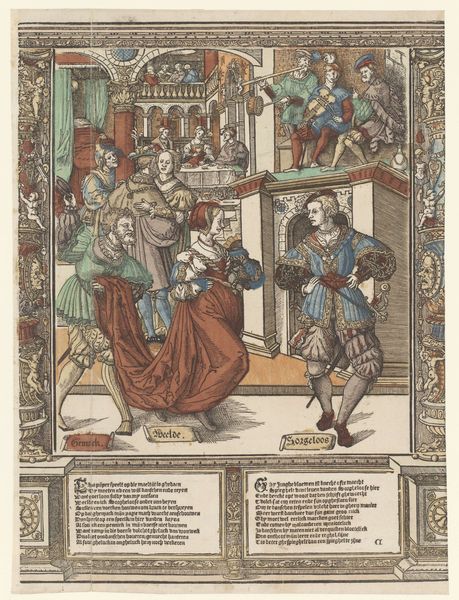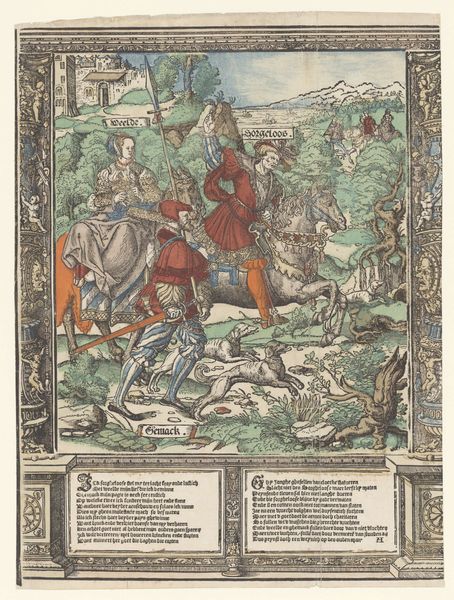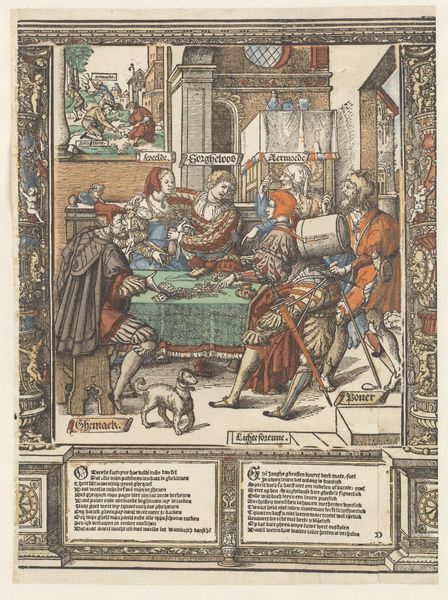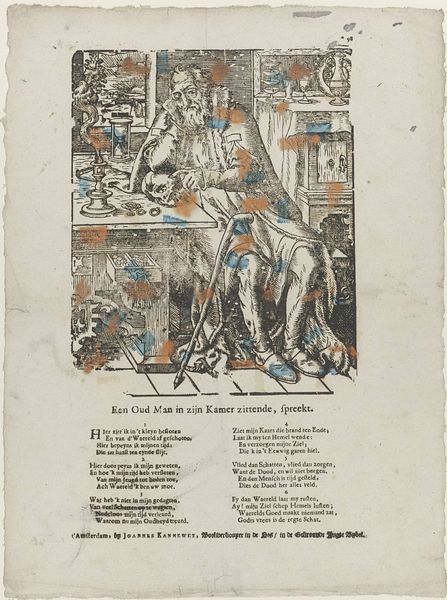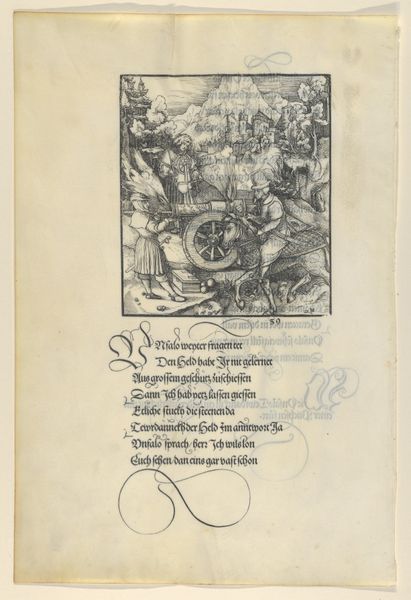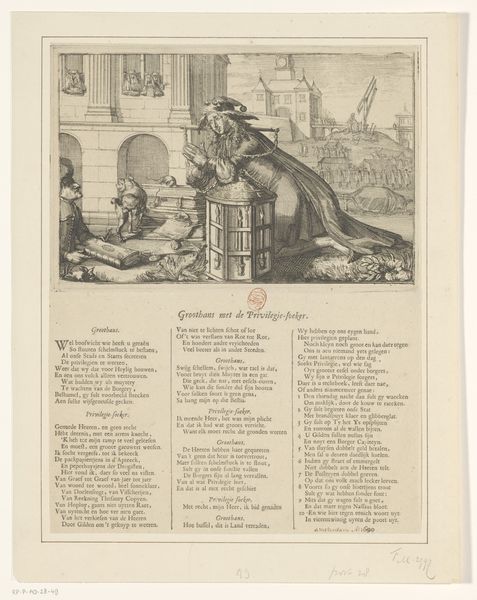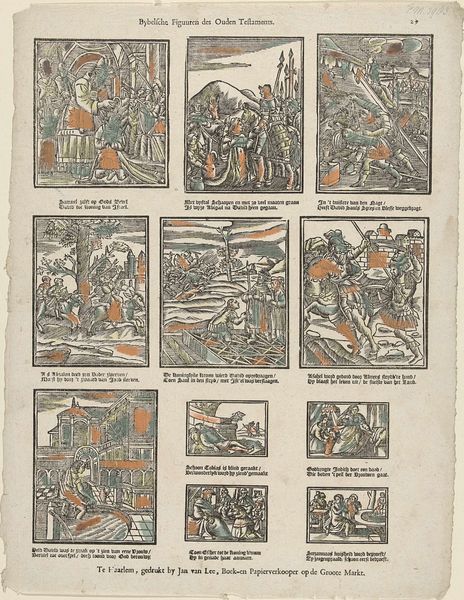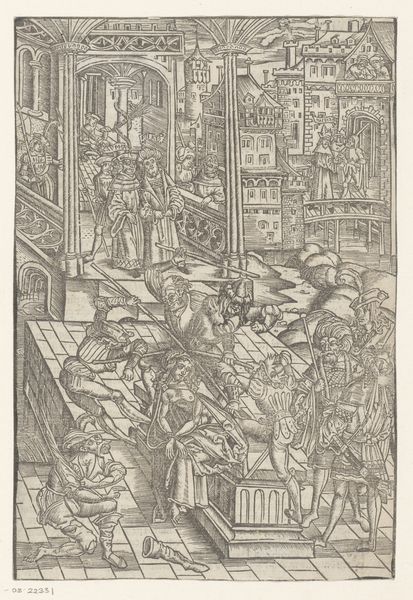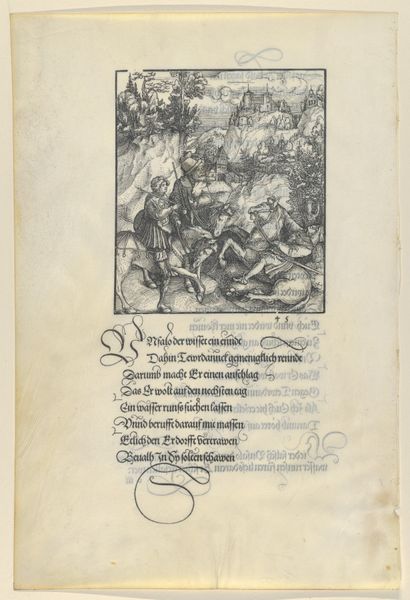
print, woodcut
#
narrative-art
# print
#
figuration
#
woodcut
#
genre-painting
#
history-painting
#
northern-renaissance
Dimensions: height 390 mm, width 290 mm
Copyright: Rijks Museum: Open Domain
Curator: Welcome. Here we have a Northern Renaissance woodcut with some color added, titled "Sorgheloos Leeft in Armoede," or "Carelessness Leads to Poverty." It’s attributed to Cornelis Anthonisz. and dates to 1541. Editor: It strikes me immediately as chaotic—a fragmentation that visually mirrors the breakdown within the domestic sphere depicted. What am I to make of all these disjointed scenarios playing out in a single frame? Curator: Indeed. Anthonisz. is playing with a multi-layered composition. The foreground presents our protagonists embodying recklessness—observe the disarray of tools and food on the ground, the man blithely carrying a bundle of straw while his wife cooks. This domestic mismanagement is then contrasted with scenes of eventual poverty and homelessness shown above. Editor: So it is a morality tale then. Is Anthonisz commenting on gendered roles, too? The woman's labor seemingly undone, the man's actions futile. Is he reinforcing societal expectations? The architecture is intriguing: The family literally seems to be breaking apart from the home, and look at the broken frame too, visually creating additional ruptures! Curator: Your observations are astute. We might consider that Anthonisz., working in the early stages of printmaking as a widespread medium, is aiming to communicate to a broad audience. The directness of the message reinforces traditional values—hard work prevents poverty. While there are visual cues of disarray, formal clarity reigns nonetheless. Editor: But doesn’t that directness flatten more complex social realities? How many other circumstances might drive people to poverty in 16th-century Holland—factors outside of individual failing? Is it just instruction, or a pointed critique? Curator: The piece, from its linear composition to the inclusion of didactic texts below, favors direct instruction over ambiguity. Still, the vivid presentation draws you in, don’t you agree? Editor: I do. Despite my reservations about the didactic intent, there's a captivating visual energy that bridges time. This image, meant to instruct, now prompts questioning, and perhaps inspires necessary disruption of outdated perspectives. Curator: An interesting note to end on. Thank you for offering that challenge to the presumed fixed reading.
Comments
No comments
Be the first to comment and join the conversation on the ultimate creative platform.

